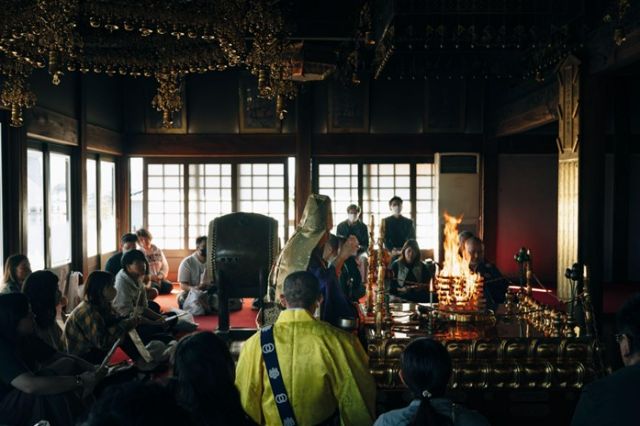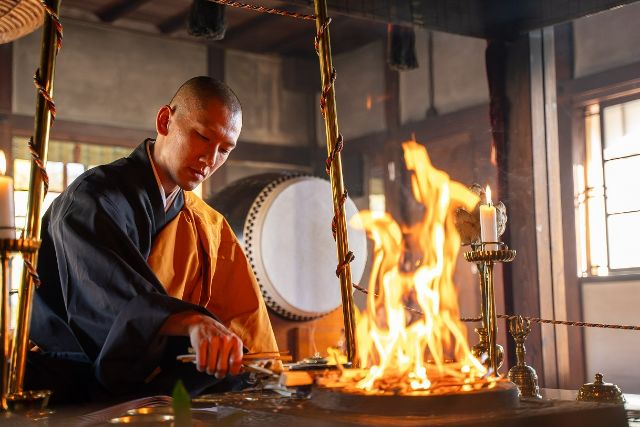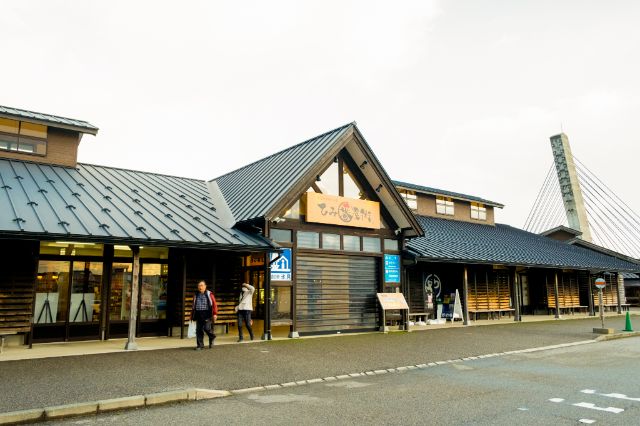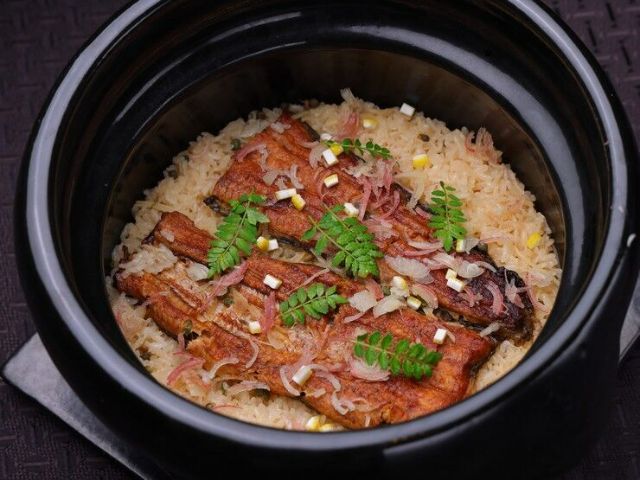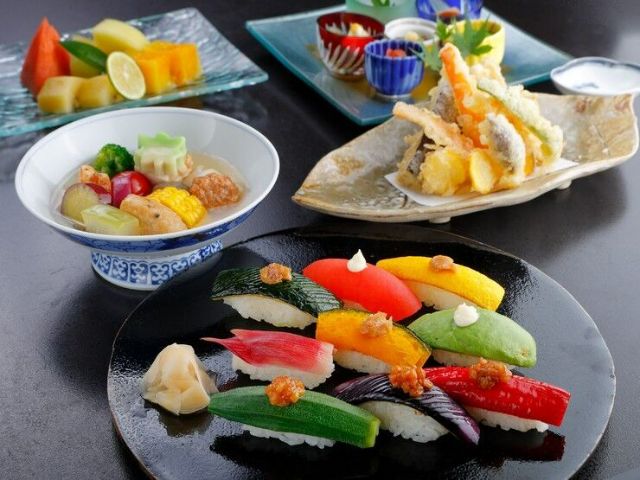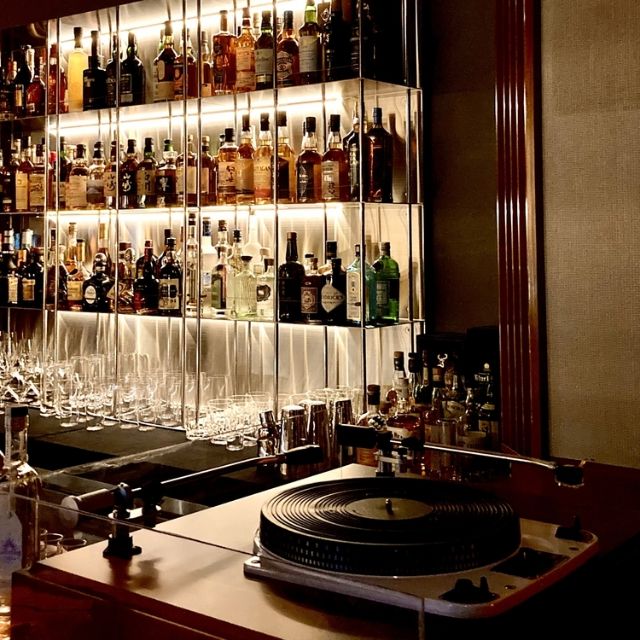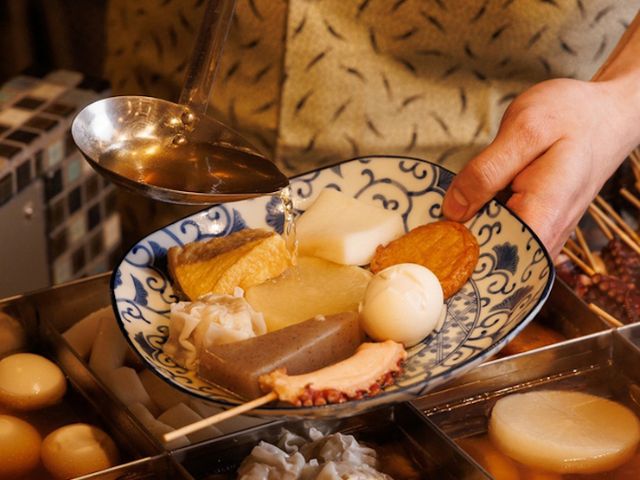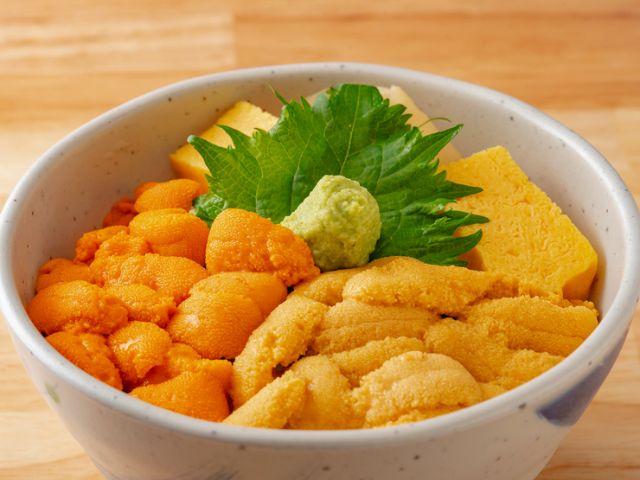Unlocking Luck: Joining the Buddhist Rituals at the Temple Voted Number One in Japan for Good Fortune - An excursion to Kumagaya
Kumagaya is about 1 hour and 30 minutes from Tokyo by car and 40 minutes by the fastest train. The city of Kumagaya is located in the northwestern part of Saitama Prefecture, which is next to Tokyo. The city is prone to high summer temperatures due to the urban heat island effect. In the summer of 2018, the city posted the highest temperature ever recorded in Japan, 41.1°C. Every summer, people throughout Japan wonder how hot the temperature will be this year, and Kumagaya is the “hottest city in Japan.” It is also called “Rugby Town” because there are many high schools with strong rugby teams in the area and because it was one of the venues for the 2019 Rugby World Cup that was held in Japan. Kumagaya is indeed one of the hottest cities in Japan in terms of temperature, sports, and sightseeing.
Kumagaya is also an area with a rich history. Many warlords in Kumagaya, such as Naozane Jiro Kumagai in the 12th to 13th centuries, are said to have played an active role in the Genpei War (1180–1185 AD). Agriculture has flourished in Kumagaya since ancient times,and delicious grains and vegetables have been grown in its fertile soil, surrounded by two major rivers, the Tone River and the Ara River. Double crops of rice and wheat in particular and vegetables such as green onions, carrots, and Japanese yams are agricultural products typical of Saitama and not just Kumagaya.
For the purpose of this article, we took a trial tour of some of the must-see spots in Kumagaya. From mysterious temple ceremonies to harvesting vegetables and making udon noodles,take in the charms of Kumagaya, which is the place to visit if you want to take a short trip from Tokyo.
A Buddhist ritual to transmit "secret teachings" Ryusenji
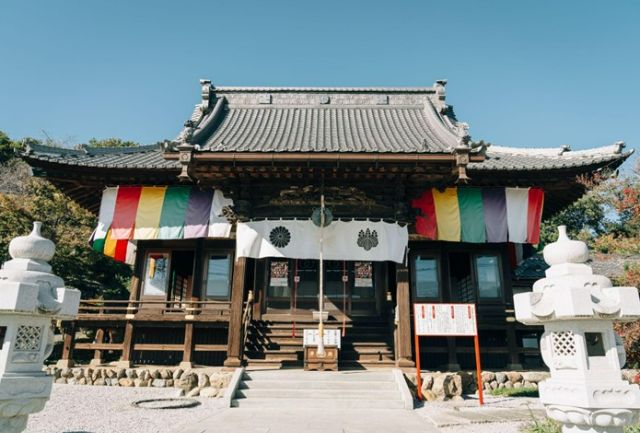
There are several sects of Buddhist temples in Japan. Ryusenji Temple in Kumagaya is one of these sects, and the temple teaches esoteric Buddhism, which is also known as secret teachings." The ceremony is held in the main hall, where Buddhist statues are enshrined. As a fire burns, monks recite sutras. Visitors to Ryusenji Temple can participate in a secret Buddhist ceremony called "Goma."
In Japan, a certain unlucky age depending on the year of one's birth is traditionally known as "yakudoshi." Ryusenji Temple is believed to be a place to ward off the bad luck of "yakudoshi" and to be blessed with good fortune to improve one’s luck. This is why the temple is called the "Sacred Site in Saitama to Usher in Good Luck and Ward off Bad Luck," and it is one of the most blessed sites in Kanto. Together with Daishoin Temple in Hiroshima Prefecture and Mondoyakujin (Tokoji) Temple in Hyogo Prefecture, Ryusenji Temple is one of the three great sites in Japan to ward off bad luck and usher in good luck. The fire used in the ritual represents "burning away the evil desires of human beings," and participating in the ritual will ward off bad luck and improve one’s luck.

Visitors to a shrine or temple traditionally received a red stamp or seal to mark their visit, but Ryusenji Temple is the birthplace of a beautiful, intricately crafted "seal" cut from paper. The seal is a symbol of your visit to the temple and is said to bring back good fortune at the same time. Ryusenji Temple's seals are made by the traditional craft technique known as "papercutting."
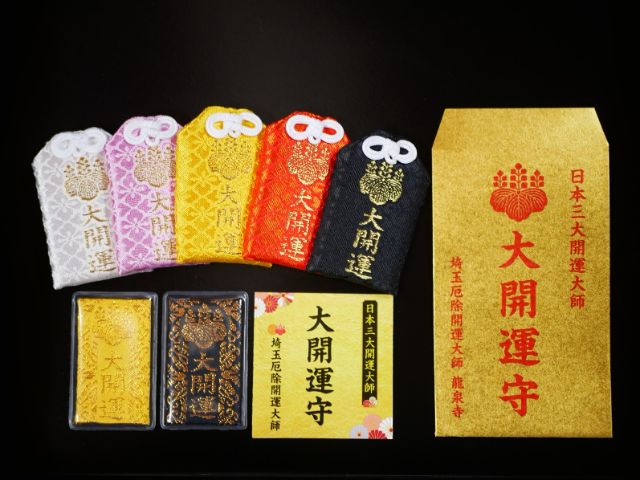
In addition, in Japan, there is a practice of bringing back a temple's blessings in the form of talismans. In 2020, Ryusenji Temple's "Great Luck Charm" was chosen as the No. 1 talisman among the "10 Most Powerful Good Luck Charms in Japan" by "Yahoo! (Japan's largest search engine), and many visitors brought back a "Great Luck Charm" as well as Ryusenji Temple's blessings.

Ryusenji Temple's seal cut from paper and its great luck charm (for the fall of 2023)

Vegetable Friends' Farm, where you can enjoy the experience of harvesting vegetables
This is a farm operated by Kewpie, the most popular mayonnaise maker in Japan. Here, you can discover the charm of vegetables. Visitors can experience harvesting vegetables in fields on the premises. The fields are planted with many varieties of vegetables, and visitors can harvest several kinds of vegetables that are decided on a daily basis.

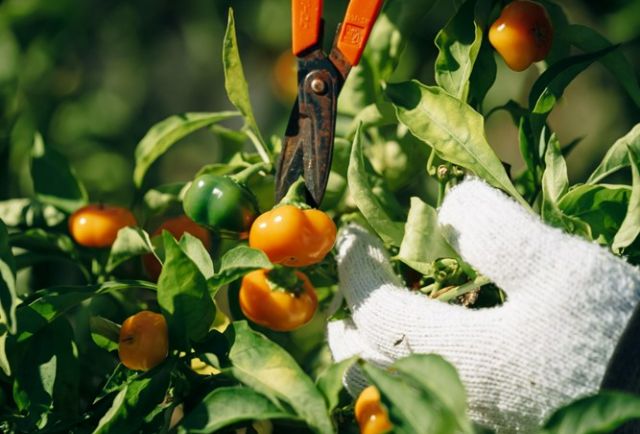
Small bell peppers and mini bell peppers

Deciding which type or color of vegetable to pick is a very enjoyable experience, and the vegetables can be easily picked with just a pair of scissors or simply pulled out of the soil. In addition, workshops on various topics such as mayonnaise, pickles, and pickling are held regularly. At the farm, you can enjoy soft-serve ice cream made with seasonal fruits or gourmet dishes. You can also select fresh vegetables delivered directly from farmers in the Kumagaya area and processed foods sold at the market to serve as souvenirs.
Ganso Inakappe UdonA restaurant where you can enjoy traditional "udon" noodles
The City of Kumagaya is No. 1 in wheat production in Saitama Prefecture, and noodles made from wheat have long been known as a local delicacy. The noodles are thick and called "udon." The people of Kumagaya love "udon" so much that most elementary schools in the area offer classes on making udon noodles.
There are many famous udon restaurants in the city of Kumagaya. One of the most popular is "Ganso Inakappe Udon" which has been in business for more than 40 years. The udon noodles served for dipping are made by hand every morning. They are very springy, and the aroma and sweetness of wheat grow as you bite into them. For this article, we were allowed to try our hand at making udon noodles at Inakappe Udon.


Using a rolling pin, roll out the dough to an even thickness.

Once the dough is spread out so that it is somewhat thin, fold it and cut it with an udon knife.

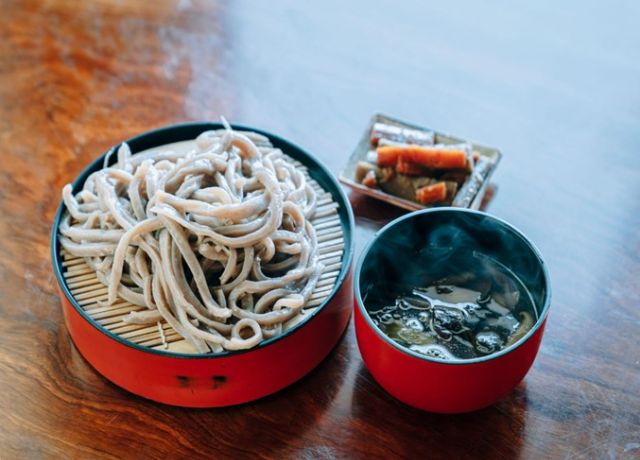


The noodles are dipped in the soup and then eaten.
Fukaya-Hanazono Premium Outlets, the newest outlet mall outside of Tokyo

Crowded with locals
Fukaya-Hanazono Premium Outlets is one of the newest outlet malls in the suburbs of Tokyo. The mall,which opened at the end of 2022, features more than 130 stores, including luxury international brands such as Boss and Armani as well as popular Japanese stores such as United Arrows and Beams.
In addition to shopping,there are a wide variety of restaurants. The mall has a food court where you can enjoy dishes such as sushi, udon, steak, and tacos in a casual setting, and you can also buy local delicacies from Nagatoro et Galet (a café specializing in finger food) and Moi Saitama Maruhiro (a store with multiple brands of food made in Saitama Prefecture) to serve as souvenirs.

The mall is also pet-friendly, with a common area that includes a rest spot with a permanent foot-washing area and leash hooks. Bring your furry friend and enjoy shopping, dining, and strolling at the same time.
An excursion to the hottest city in Japan to improve your luck
Disclaimer: All information is accurate at time of publication.
Thank you for reading our article.
Our goal is to take your culinary journey to the next level by helping you find the best restaurant. With SAVOR JAPAN, you can search and make reservations for
the Japanese Cuisine restaurants found in and around Saitama that fill your needs.
Discover more Japanese Cuisine restaurants by area
- Tokyo Area
- Near Tokyo
- Kyoto and Osaka Area
- Hokkaido Area
- Northern Honshu (Tohoku)
- Central Honshu (Chubu)
- Western Honshu (Chugoku)
- Shikoku
- Kyushu
- Okinawa and Ryukyu Islands
Discover more restaurants to eat Japanese Cuisine by area
Keywords
Related Articles
New Articles
Categories
Cuisine
- Bars (23)
-
Japanese Cuisine (676)
- Kaiseki (46)
- Nabe (19)
- Okonomiyaki (24)
- Shabu Shabu (36)
- Soba (17)
- Sushi (137)
- Tempura (18)
- Teppanyaki (46)
- Shojin Ryori (3)
- Tonkatsu (12)
- Kushiyaki (10)
- Yakitori (46)
- Sukiyaki (35)
- Japanese Cuisine (341)
- Oyster (2)
- Sashimi/ Seafood (19)
- Unagi (eel) (30)
- Motsu Nabe (offal hotpot) (6)
- Mizutaki (chicken hot pot) (3)
- Oden (8)
- Kaisendon (seafood bowl) (9)
- Udon (2)
- Taverns(Izakaya) Cuisine (125)
- Western Cuisine (42)
- Italian/French Cuisine (95)
- Yakiniku/Steak (224)
- Chinese Cuisine (26)
- Ramen (Noodles) Cuisine (26)
- Cafe/Sweets (60)
- Other Asian Cuisine (5)
- Global/International Cuisine (7)
- Alcohol (45)
- Other (11)
Area
- Shikoku (10)
- Kyoto and Osaka (345)
-
Tokyo (460)
- Tokyo (286)
- Ginza (44)
- Roppongi (22)
- Shibuya (26)
- Shinjuku (47)
- Asakusa (20)
- Ebisu (12)
- Tsukiji (10)
- Tokyo Landmarks (4)
- Ueno (24)
- Akihabara (9)
- Ikebukuro (12)
- Jiyugaoka, Denenchofu, Nakameguro (9)
- Shimokitazawa (4)
- Kichijoji (3)
- Tachikawa (1)
- Omotesando, Harajuku, Aoyama (18)
- Akabane (1)
- Kagurazaka (4)
- Akasaka (10)
- Odaiba (1)
- Tsukishima, Harumi, Toyosu (3)
- Near Tokyo (100)
- Okinawa and Ryukyu Islands (58)
- Hokkaido (124)
- Northern Honshu (Tohoku) (31)
- Central Honshu (Chubu) (144)
- Western Honshu (Chugoku) (32)
- Kyushu (92)
Archives
- December 2025(9)
- November 2025(4)
- October 2025(3)
- September 2025(6)
- August 2025(11)
- July 2025(19)
- June 2025(18)
- May 2025(34)
- April 2025(43)
- March 2025(30)
- February 2025(36)
- January 2025(26)
- December 2024(69)
- November 2024(31)
- October 2024(15)
- September 2024(39)
- August 2024(65)
- July 2024(31)
- June 2024(54)
- May 2024(61)
- April 2024(28)
- March 2024(31)
- February 2024(42)
- January 2024(32)
- December 2023(20)
- November 2023(5)
- October 2023(11)
- September 2023(7)
- August 2023(18)
- July 2023(8)
- June 2023(8)
- May 2023(18)
- April 2023(15)
- March 2023(1)
- January 2023(1)
- April 2022(2)
- March 2022(2)
- February 2022(1)
- January 2022(1)
- July 2021(1)
- March 2021(1)
- February 2021(1)
- December 2020(1)
- October 2020(1)
- September 2020(2)
- August 2020(10)
- July 2020(6)
- June 2020(9)
- May 2020(11)
- April 2020(8)
- March 2020(8)
- February 2020(13)
- January 2020(9)
- December 2019(24)
- November 2019(8)
- August 2019(14)
- July 2019(15)
- June 2019(18)
- May 2019(17)
- April 2019(16)
- March 2019(22)
- February 2019(22)
- January 2019(26)
- December 2018(34)
- November 2018(40)
- October 2018(32)
- September 2018(11)
- August 2018(8)
- July 2018(6)
- June 2018(9)
- May 2018(10)
- April 2018(21)
- March 2018(74)
- February 2018(39)
- January 2018(26)
- December 2017(60)
Keywords
- Omakase
- Accessible
- Affordable
- All-You-Can-Eat
- Amazing Scenery
- anime
- Art
- Autumn
- Awards
- Beer Gardens
- Breakfast
- Chef Recommendations
- Cherry Blossoms
- Chinese
- Close To Station
- Condiments
- Counter
- Coupon
- Crab
- Culture
- Dassai
- Dates
- delivery
- Early Summer
- Editor's Recommendation
- English Available
- Event
- Expo
- Fall Leaves
- Family-Friendly
- Famous Restaurant
- Famous Tourist Spot
- Fast Food
- festival
- fireworks
- Flower Farm
- Free Wi-Fi
- French
- Great Location
- Guide
- Hibachi
- hotpot
- How To
- hydrangea
- Hygiene
- Illumination
- Italian
- Izakaya
- Japanese
- Japanese alcohol
- jingisukan
- Kaiseki
- Kappo
- Kushiage
- Kushikatsu
- Kyoto
- Late-Night
- Lunch
- Manners
- matsusakagyu
- Michelin
- mizutaki
- Model Course
- monjayaki
- motsunabe
- Mt.Fuji
- Multilingual Menus
- Nabe
- Narita Airport
- New Year
- Ninja
- Noodle
- Oden
- Okonomiyaki
- omotenashi
- Onsen
- Osaka
- Osaka Station
- Photogenic Site
- pizza
- PR
- Private Room
- Ramen
- ranking
- Recipe
- Regional Cuisine
- Resort
- Rice Bowl Dish (Donburi)
- sacred places
- Sake
- Sakura
- Sashimi
- sea urchin
- Setouchi Area
- Shabu Shabu
- sightseeing
- Signature Dish
- Soba
- Solo Diners Welcomed
- Spicy Food
- Spring
- Steak
- Summer
- Sunflower
- Sushi
- takeout
- Teppanyaki
- Terrace Seating
- Tokyo
- Tokyo Experiences
- Tokyo Skytree
- Tokyo Tower
- unagi
- UNESCO
- Vegan
- Vegetarian
- Wagyu
- What Popular Gourmet Sites Recommend
- Whisky
- Wine Bar
- Winter
- Wisteria
- Workshop
- World Heritage Site
- World Writers
- Yakiniku
- Yoshoku
- Yuba
- Zen
Discover Restaurants By Area
-

Tokyo Area
Japan's largest city, Tokyo, is the center of culinary culture in Japan. Countless Tokyo restaurants serve every kind of food imaginable and the Toyosu fish market keeps restaurants stocked with the nation's finest fish.
-

Near Tokyo
Coastal areas, mountains and valleys surrounding Tokyo are bursting with tourist destinations, such as hot springs and ski slopes, where many unique foods are only available locally.
-

Kyoto and Osaka Area
The cities of Kyoto and Osaka, together with their surrounding areas, have greatly influenced Japan's culinary culture since the 7th Century. The region is renowned for its entertainment, Kobe beef, and wide-ranging traditional dishes.
-

Hokkaido Area
The island of Hokkaido is home to wide-ranging produce of the finest quality, such as rice, meat, vegetables, fish and fruit. Popular dishes from Hokkaido include robatayaki (food slowly roasted on skewers) and Sapporo miso ramen.
-

Northern Honshu (Tohoku)
The northern end of Japan's main island, Honshu, is renowned for its seasonal fruit and vegetables, nation-leading harvest of fish (especially tuna from Ohma), and delicious beef from Yonezawa, Sendai and Yamagata.
-

Central Honshu (Chubu)
Chubu is in the center of Japan's main island, Honshu, and its culinary culture reflects its position between Japan's western and eastern halves. Delicious Hida beef, world-famous Mount Fuji and many acclaimed sake breweries are in Chubu.
-

Western Honshu (Chugoku)
Chugoku, on the southwest of Japan's main island, is rich with diverse produce. Many of its products are praised as Japan's best, including Matsuba crabs from Tottori and oysters from Hiroshima. Its pears and muscats are also top grade.
-

Shikoku
The mild climate of Shikoku is ideal for growing citrus fruit such as sudachi. Shikoku is also famous for Sanuki udon noodles, huge yields of tiger prawn from Ehime Prefecture and the best torafugu (tiger globefish) in the country.
-

Kyushu
Western culture was first introduced to Japan through Kyushu, Japan's third largest island, where the influence of Portuguese and other western cuisine influenced the creation of a colorful culinary tradition.
-

Okinawa and Ryukyu Islands
Okinawa, Japan’s southernmost prefecture, is a treasure trove of distinctive dishes and drinks that have become popular throughout Japan, including Okinawa soba, unique sushi toppings and Awamori distilled liquor.
